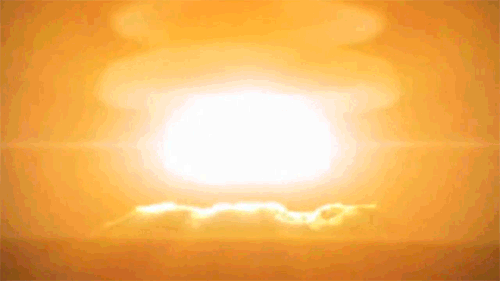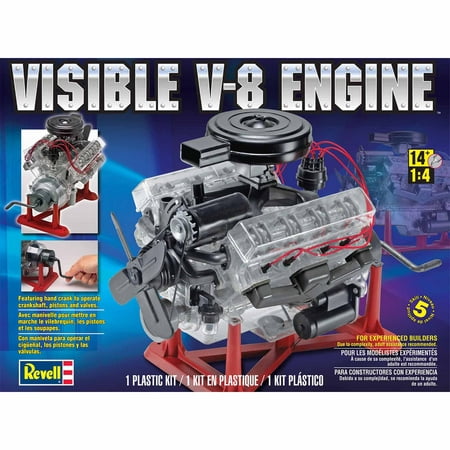
Posted on 02/19/2019 2:56:59 PM PST by ETL
“The start of the process was just learning about what other people had done with their fusion reactors,” explained the mild-mannered teen [now 14-year-old Jackson Oswal].
“After that, I assembled a list of parts I needed. [I] got those parts off eBay primarily and then often times the parts that I managed to scrounge off of eBay weren’t exactly what I needed.
So, I’d have to modify them to be able to do what I needed to do for my project.”
Building the nuclear fusion reactor was no game for Jackson. He converted an old playroom in his Memphis home into a functioning lab.
With the financial support of his parents – he spent between $8,000 and $10,000 over the course of a year collecting the parts he needed to build his nuclear fusion reactor – that was apparently the easy part.
Putting the fusion reactor together and testing to see if it worked was the real challenge. Since there isn’t exactly a manual on how to build something like that he relied on trial and error and the Open Source Fusor Research Consortium, an online forum for amateur physicists, to ensure that he was taking the proper steps toward successfully building a fusion reactor and hopefully achieving fusion.
“After a while, it became pretty simple to realize how it all worked together, but at the start it was definitely figuring out one aspect of it, memorizing what that actually meant and then moving on to a different aspect of it,” Jackson said.
“Eventually all those pieces of the puzzle came together to make a good project.”
(Excerpt) Read more at foxnews.com ...
The difference in mass between the reactants and products is manifested as either the release or absorption of energy.
This difference in mass arises due to the difference in atomic “binding energy” between the atomic nuclei before and after the reaction.
Fusion is the process that powers active or “main sequence” stars, or other high magnitude stars.
A fusion process that produces a nucleus lighter than iron-56 or nickel-62 will generally yield a net energy release.
These elements have the smallest mass per nucleon and the largest binding energy per nucleon, respectively.
Fusion of light elements toward these releases energy (an exothermic process), while a fusion producing nuclei heavier than these elements will result in energy retained by the resulting nucleons, and the resulting reaction is endothermic.
The opposite is true for the reverse process, nuclear fission.
This means that the lighter elements, such as hydrogen and helium, are in general more fusible; while the heavier elements, such as uranium, thorium and plutonium, are more fissionable.
The extreme astrophysical event of a supernova can produce enough energy to fuse nuclei into elements heavier than iron.
In 1920, Arthur Eddington suggested hydrogen-helium fusion could be the primary source of stellar energy.
Quantum tunneling was discovered by Friedrich Hund in 1929, and shortly afterwards Robert Atkinson and Fritz Houtermans used the measured masses of light elements to show that large amounts of energy could be released by fusing small nuclei.
Building on the early experiments in nuclear transmutation by Ernest Rutherford, laboratory fusion of hydrogen isotopes was accomplished by Mark Oliphant in 1932.
In the remainder of that decade, the theory of the main cycle of nuclear fusion in stars were worked out by Hans Bethe.
Research into fusion for military purposes began in the early 1940s as part of the Manhattan Project.
Fusion was accomplished in 1951 with the Greenhouse Item nuclear test.
Nuclear fusion on a large scale in an explosion was first carried out on November 1, 1952, in the Ivy Mike hydrogen bomb test.
Research into developing controlled thermonuclear fusion for civil purposes began in earnest in the 1940s, and it continues to this day.
Good one..!
You beat me to it. I was going to say that the fusion reactor is nowhere near as impressive as taking a clock apart and putting into a pencil case. That’s White House Invitation impressive.
Since nobody has really built a working fusion reactor, that should not have taken that long.
You and me both, FRiend .. ha !
Reckon that kid might just win this year’s local science fair ?


BE THE FIRST ON *YOUR* BLOC..!!
Oh boy, wait 'til the fellas see THIS..!!


Yeah - - I don’t think so.
Containment and stabilization.
Most Fusion reactions are very short term burst.
I’m interested in what they used for fuel.
It looks like he may be smirking a bit in that second picture.
I hope that doesn’t run him afoul with the PC crowd.
7
“Clock Boy” has no comment.
This story is really about how journalists know so little.
Hopefully some strawberry-perfumed bimbo doesn’t draw his attention to “the dark side”.
The Radioactive Boy Scout was mining household smoke detectors for his source.
He said it went bang.
The fission process often produces free neutrons and gamma photons, and releases a very large amount of energy even by the energetic standards of radioactive decay.
Nuclear fission of heavy elements was discovered on December 17, 1938 by German Otto Hahn and his assistant Fritz Strassmann, and explained theoretically in January 1939 by Lise Meitner and her nephew Otto Robert Frisch.
Frisch named the process by analogy with biological fission of living cells.
For heavy nuclides, it is an exothermic reaction which can release large amounts of energy both as electromagnetic radiation and as kinetic energy of the fragments (heating the bulk material where fission takes place).
In order for fission to produce energy, the total binding energy of the resulting elements must be more negative (greater binding energy) than that of the starting element.
Fission is a form of nuclear transmutation because the resulting fragments are not the same element as the original atom.
The two nuclei produced are most often of comparable but slightly different sizes, typically with a mass ratio of products of about 3 to 2, for common fissile isotopes.[1][2]
Most fissions are binary fissions (producing two charged fragments), but occasionally (2 to 4 times per 1000 events), three positively charged fragments are produced, in a ternary fission.
The smallest of these fragments in ternary processes ranges in size from a proton to an argon nucleus.
Apart from fission induced by a neutron, harnessed and exploited by humans, a natural form of spontaneous radioactive decay (not requiring a neutron) is also referred to as fission, and occurs especially in very high-mass-number isotopes.
Spontaneous fission was discovered in 1940 by Flyorov, Petrzhak and Kurchatov[3] in Moscow, when they decided to confirm that, without bombardment by neutrons, the fission rate of uranium was indeed negligible, as predicted by Niels Bohr; it was not.[3]
The unpredictable composition of the products (which vary in a broad probabilistic and somewhat chaotic manner) distinguishes fission from purely quantum-tunneling processes such as proton emission, alpha decay, and cluster decay, which give the same products each time.
Nuclear fission produces energy for nuclear power and drives the explosion of nuclear weapons.
Both uses are possible because certain substances called nuclear fuels undergo fission when struck by fission neutrons, and in turn emit neutrons when they break apart. This makes a self-sustaining nuclear chain reaction possible, releasing energy at a controlled rate in a nuclear reactor or at a very rapid, uncontrolled rate in a nuclear weapon.
The amount of free energy contained in nuclear fuel is millions of times the amount of free energy contained in a similar mass of chemical fuel such as gasoline, making nuclear fission a very dense source of energy.
The products of nuclear fission, however, are on average far more radioactive than the heavy elements which are normally fissioned as fuel, and remain so for significant amounts of time, giving rise to a nuclear waste problem.
Concerns over nuclear waste accumulation and over the destructive potential of nuclear weapons are a counterbalance to the peaceful desire to use fission as an energy source.
Farnsworth–Hirsch fusor (Click Here)This design came from work by Philo T. Farnsworth in 1964 and Robert L. Hirsch in 1967More Info At Link.
(BTW. You can also thank Philo Farnsworth For The modern all electronic Television system)
Thank you, Doktor Ludwig von Drake!
;^)
Disclaimer: Opinions posted on Free Republic are those of the individual posters and do not necessarily represent the opinion of Free Republic or its management. All materials posted herein are protected by copyright law and the exemption for fair use of copyrighted works.